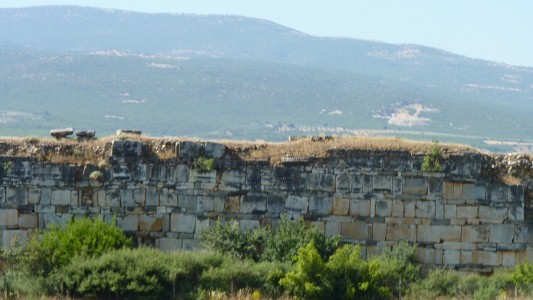
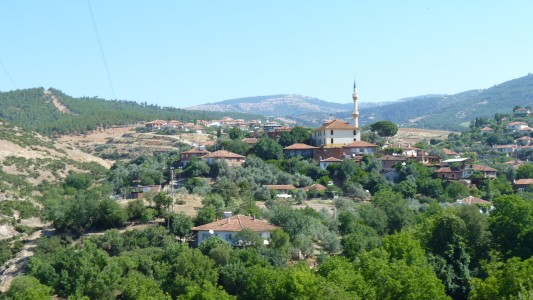
A relief to be away from major roads.
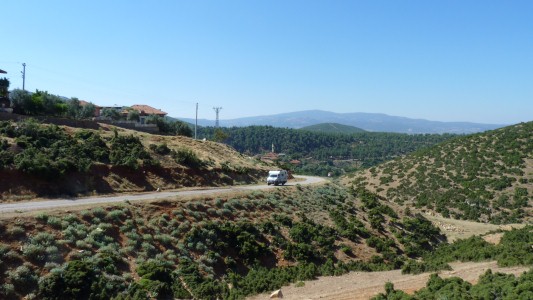
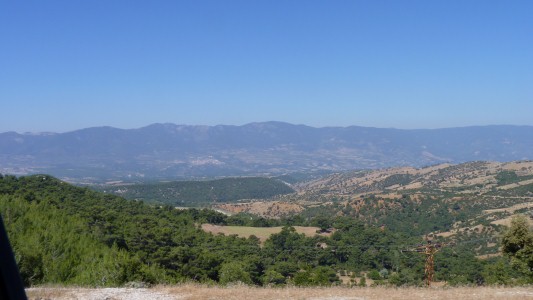
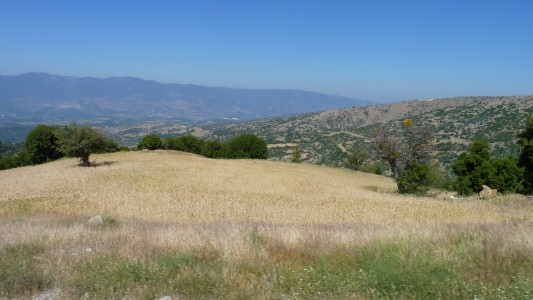
Wheat has either been harvested or is close.
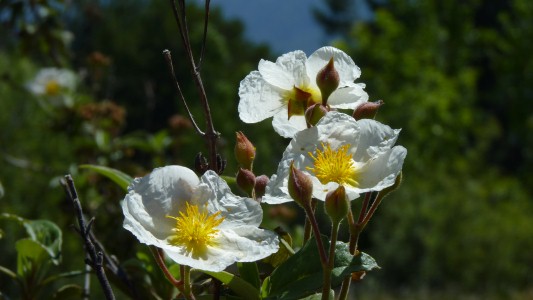
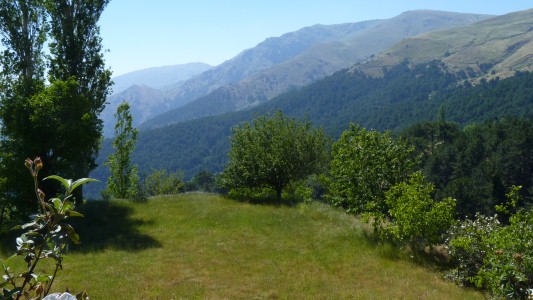
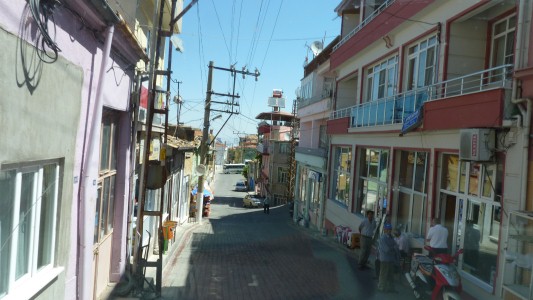
A quick stop for bread.
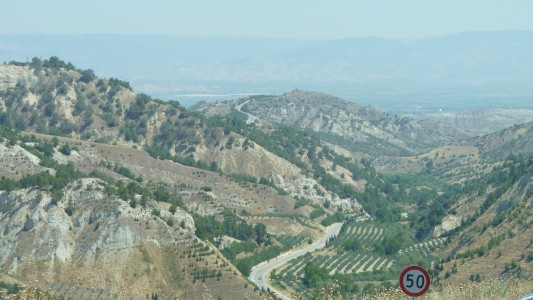
Pammukale is on the far side.
Denizli, which we will avoid as it looks a bit big, a few km to our right.
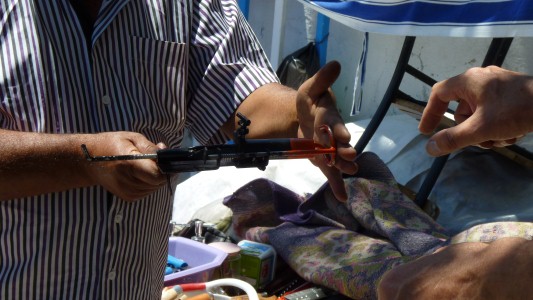
It also has an attractive main street.
This is a trap. Loaded with 12-bore cartridge. An animal pushes against the end and the spring fires the cartridge.
Our Turkish wasn't good enough to know what animal.
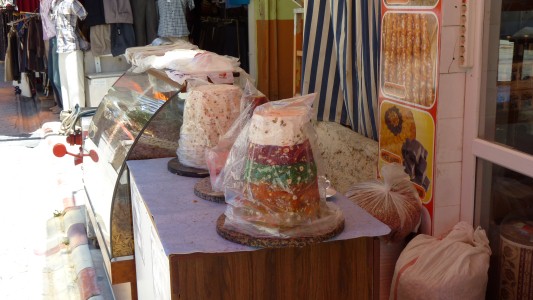
For eating.
Tasted a bit like nougat.
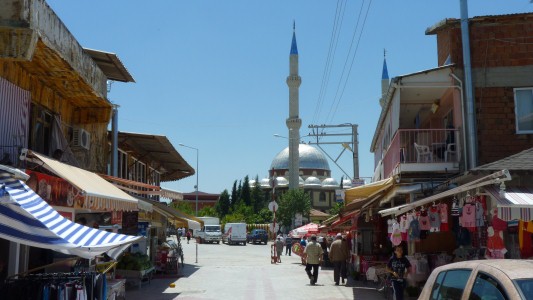
An aluminium clad mosque at each end.
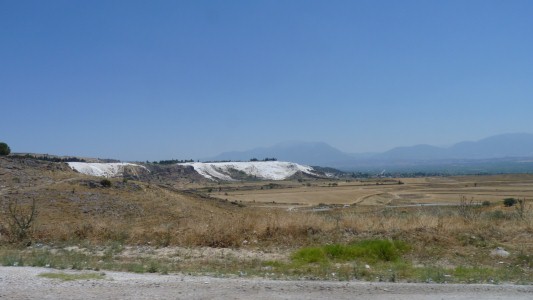
Not snow. Its travertine (calcuim carbonate for the unromantic).
Deposited from hot springs.
We avoided the north entrance, probably annoyed at car parks which think we are a mini-bus and try to charge accordingly.
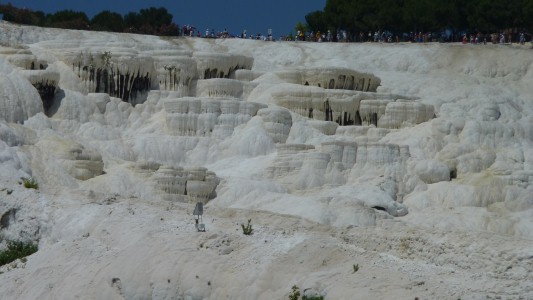
Here its flowstone over a wide (more than km) of escarpment.
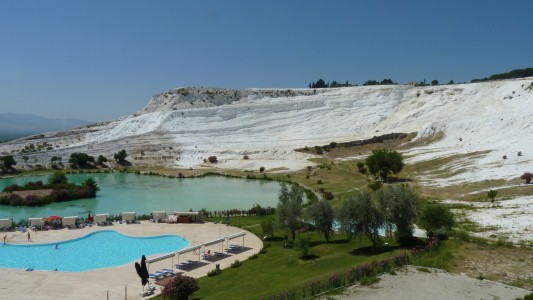
A very expensive (to us) swimming pool.
We parked in Pammukale village and walked up the travertine.
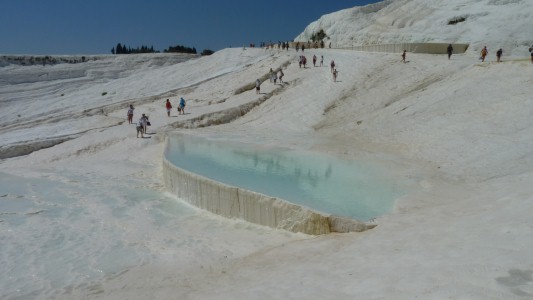
Tourists now walk with bare feet to protect the environment.
The ponds still look a bit artificial!
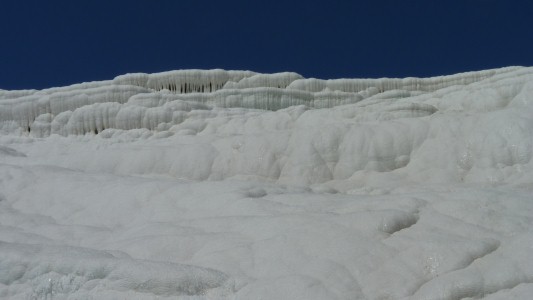
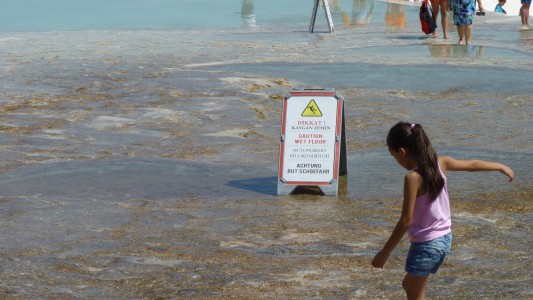
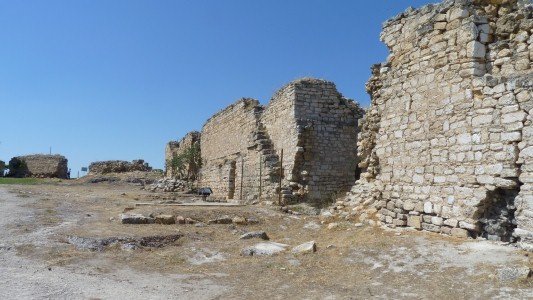
This the medieval fortress. A defensive wall and three towers.
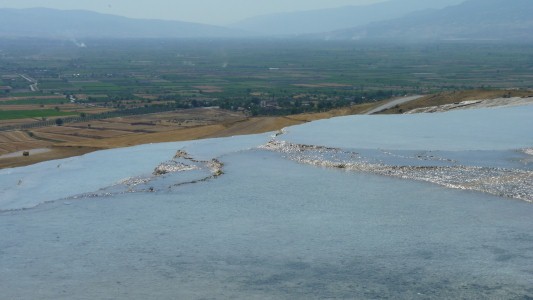
We found some pools with water.
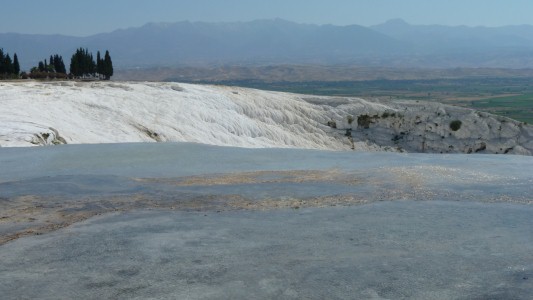
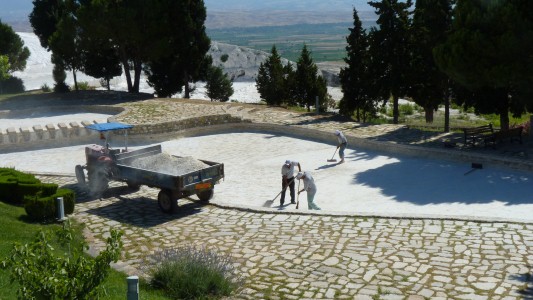
This is a bit of maintenance for a paddling pool.
We wondered if the sweepings were used for building repair elsewhere.
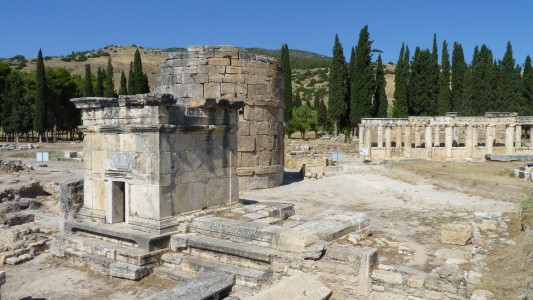
The nekropolis is the most extensive area of Hierapolis.
It seems ironic to us that a health resort should have the largest nekropolis (cemetery) we've seen on our travels.
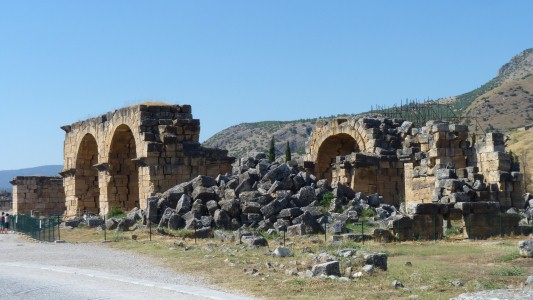
Built in 3rd century AD as a bath house.
Converted to a church in 6th century AD.
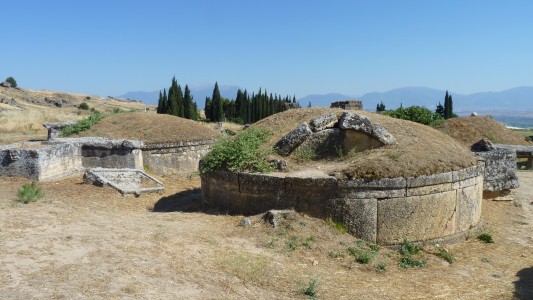
A 2nd century AD tumulus grave.
Lots of burials inside, around the edges of vaulted chamber.
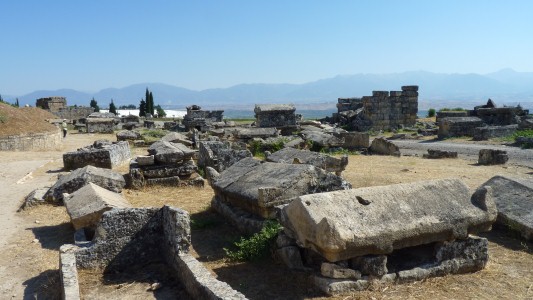
Somewhere on one of them is a drawing of a wheel and crank.
Let me know if you find it - with gps coordinates.
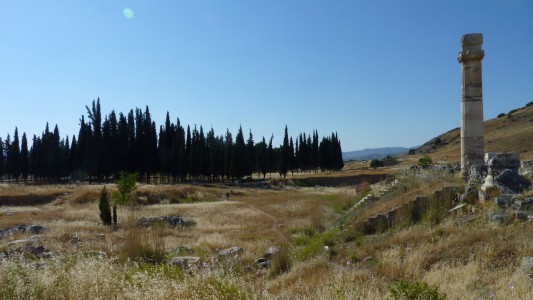
Margaret found the main street but I was too intent on getting burrs in my socks.
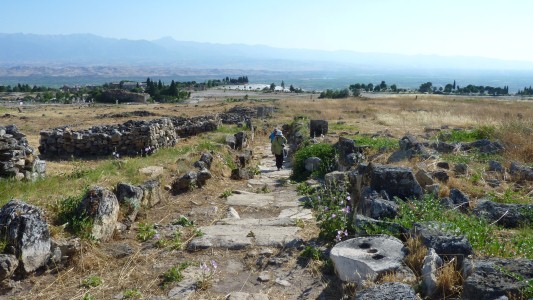
Paved, with drains under the middle.
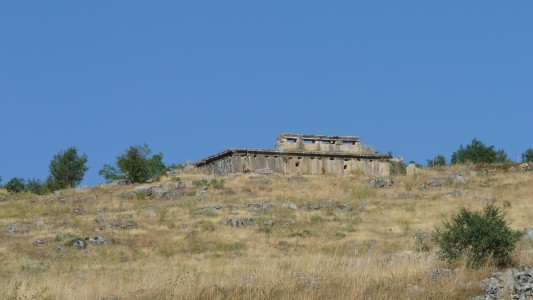
Its described as a temperate climate.
This would have been St Phillps Martyrion if we'd climbed the steps.
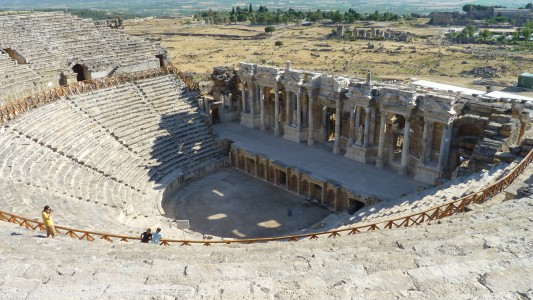
This is the 3rd century AD theatre.
The Italian archeologists have done a good job of rebuilding with mostly original bits.
Apart from the coca-cola stand at the back that obscured the sign and looked like an out of place eyesore.
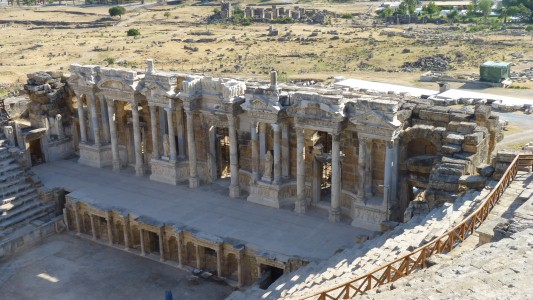
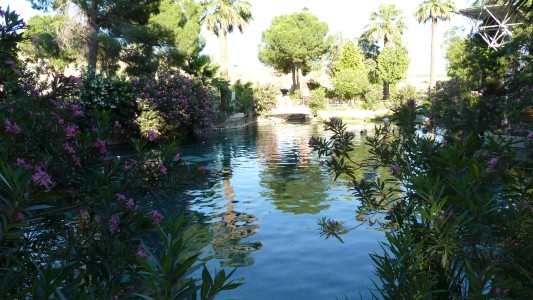
The "antique pool". Cleaned up and salvaged.
The hotel, along with the others that had been built since, have been demolished to make way for greenery.
This is the nearest we got to any of the springs.
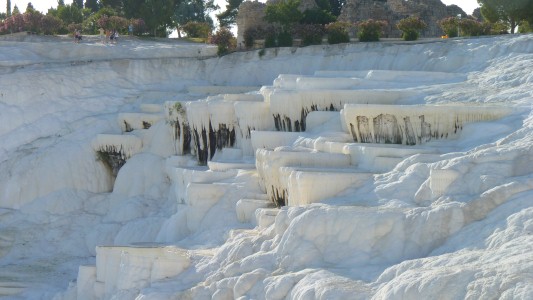
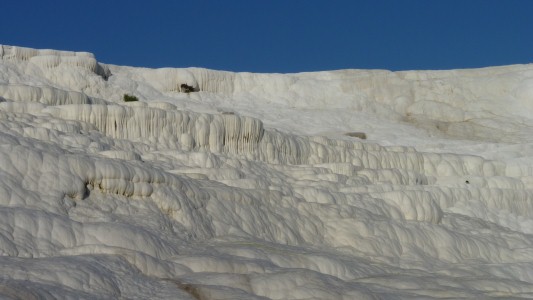
While avoiding the dirty bits.
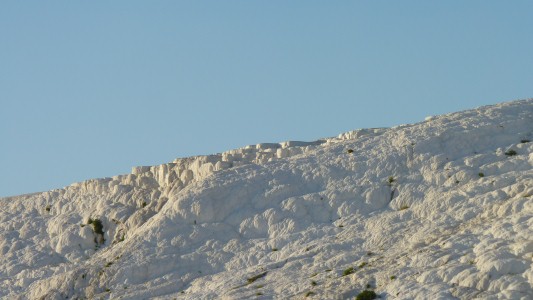
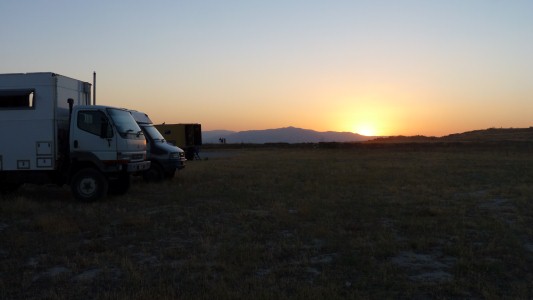
The third truck belongs to a couple of friendly Germans who plied us with their last bottle of beer.